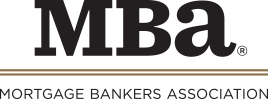
Zillow: Purchase Loan Activity Remains Strong Despite Rising Rates
Despite the highest 30-year fixed mortgage rates since July 2015, home purchase activity has been strong and expects to remain so, said Zillow, Seattle.
Despite the largest weekly rate increase since 2013, purchase mortgage requests on Zillow have maintained their pre-election activity, indicating that borrowers are moving forward with their plans to purchase amidst the rising interest rates. The refinance market is more rate-sensitive, and refinance requests on Zillow are down 32 percent compared to early November.
“Potential homebuyers may be feeling a sense of urgency to lock in a mortgage before rates move even higher, as financial markets widely expect the U.S. Federal Reserve to raise its policy interest rate by a quarter of a percentage point during its Federal Open Market Committee meeting,” said Erin Lantz, vice president of mortgages for Zillow Group. “The outcome of this meeting will influence the mortgage bond market which, in turn, will likely impact current mortgage rates for U.S. borrowers.”
However, a Zillow Group Mortgage analysis shows that the mortgage payment on the typical home in most of the country’s housing market would increase by $25 or less should interest rates rise to 4.25 percent. For the typical homebuyer shopping for the median U.S. home, valued at $191,200, an increase in mortgage rates from 4 percent to 4.25 percent would increase their monthly mortgage payment by $22. Across the U.S., the monthly mortgage payment on the typical home would increase by only $25 or less in 18 of the largest 35 metros if rates rise from 4 percent to 4.25 percent.
“While those looking to buy a home are understandably concerned about the path of rates ahead, it’s important to remember that borrowing costs remain exceptionally low by historical standards,” Lantz said. “Rising rates may impact the location or size of the home they hope to purchase, but buyers that are fully committed to buying a home are unlikely to be swayed by the FOMC’s decision to raise rates.”
Homeowners most likely to be hit hardest by a rate increase would be those living in U.S. metros where housing is expensive and affordability is already an issue. In markets such as San Francisco, San Jose and Los Angeles, monthly mortgage payments could increase $75 or more with a single 25-basis point jump. In highly competitive markets, rising mortgage rates could put additional pressure on already tight entry-level inventory and give additional advantages to those coming to the table with all-cash offers.
“It remains to be seen whether a more aggressive path of rate hikes will be implemented in 2017,” Lantz said. “Should economic indicators continue to improve and the pace of policy normalization picks up, we will eventually see the end of incredibly low mortgage rates and corresponding high affordability.”
